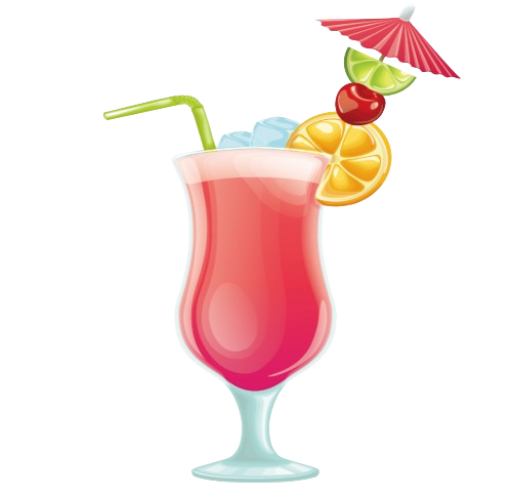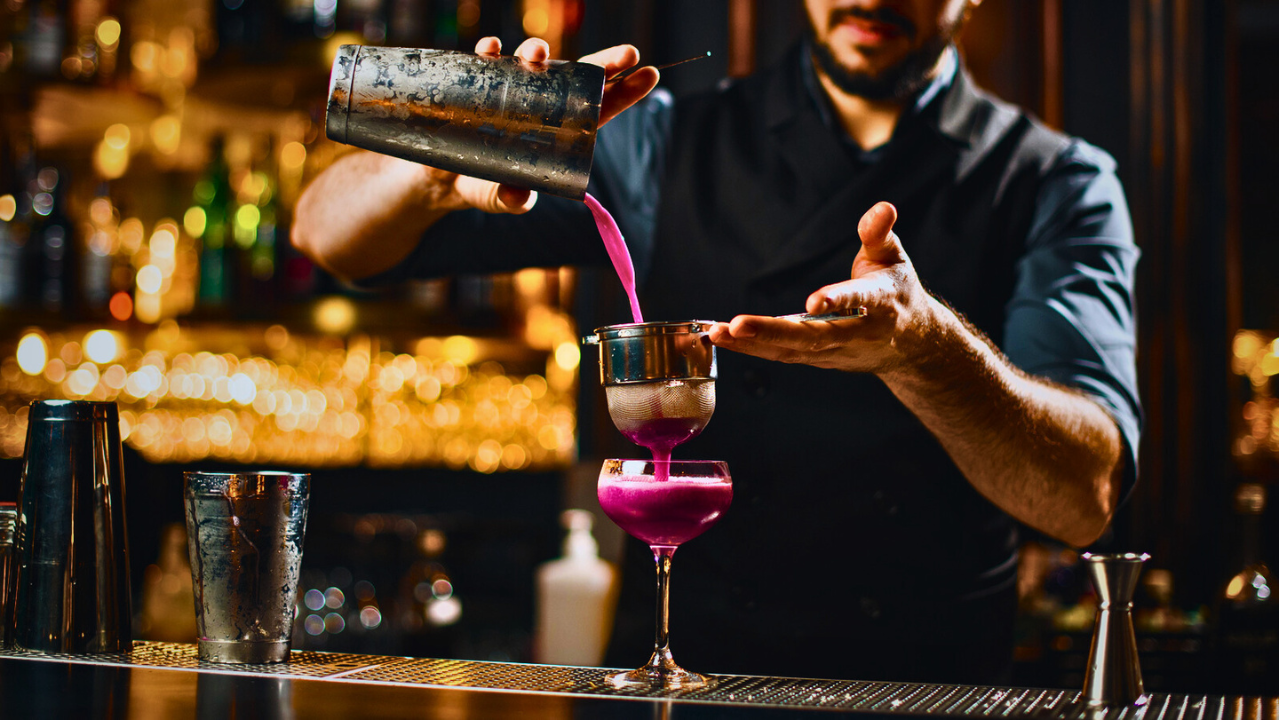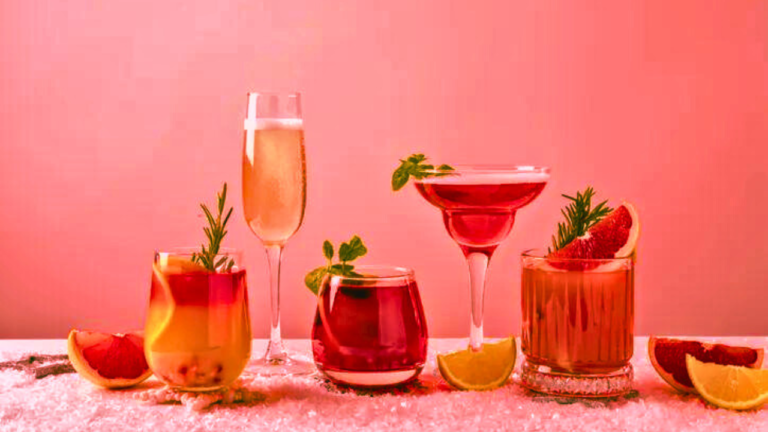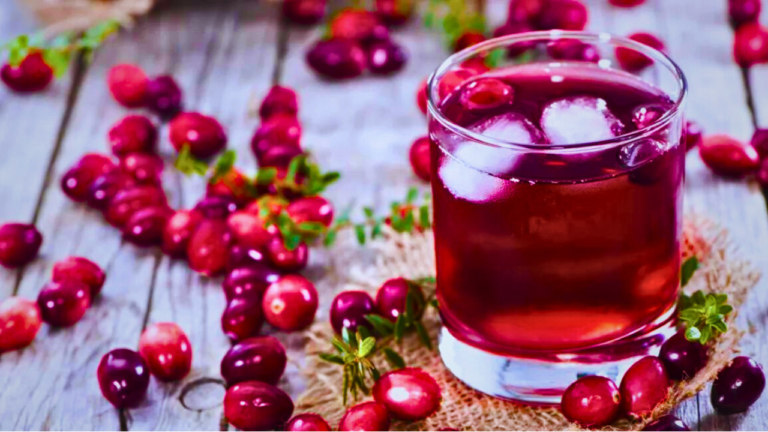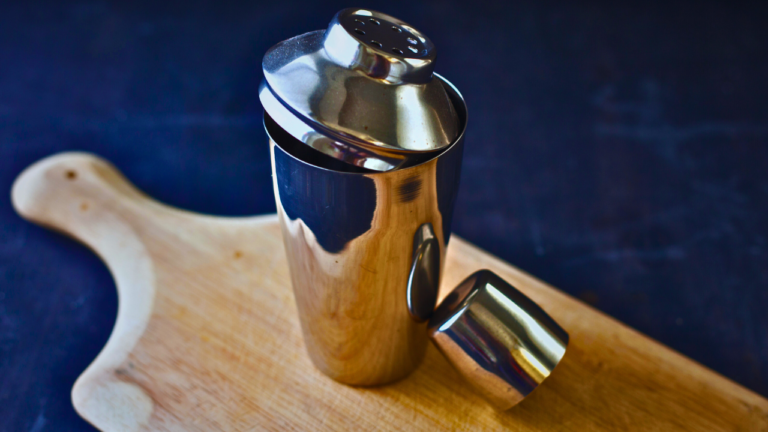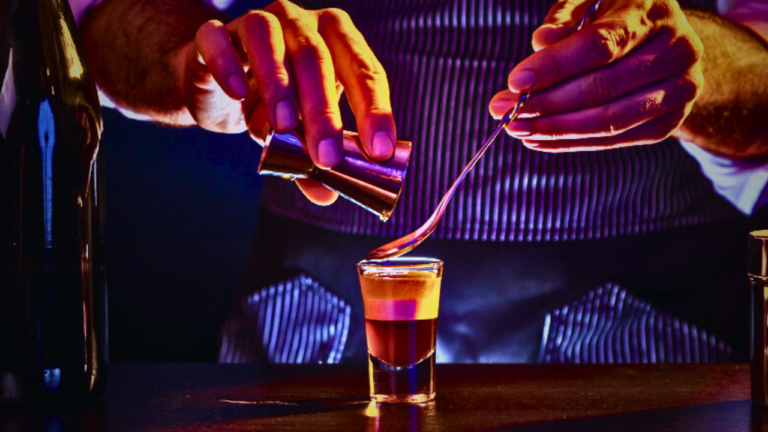Why Strain Cocktails?
Welcome! You’re about to discover the magic behind straining cocktails, a method that takes your favorite beverages from good to greatness. Journey with us through this tradition, exploring how it became an essential part of cocktail making and how you can use it to enhance your own homemade concoctions.
Straining cocktails is more than a mere technique—it’s an art that allows the person behind the bar to create a perfect blend of taste and aesthetics, providing a delightful experience for the senses.
“The beauty of a cocktail is not just in its taste but also in its clear, clean, and polished presentation. Straining is an integral part of achieving this elegance in a glass.”
So, why are we talking about straining cocktails in such detail? The answer lies in a number of compelling reasons:
- Straining helps remove pulp, seeds, ice, and herbs from the cocktail, yielding a smooth and pleasing texture.
- By regulating the amount of dilution in a drink, straining defines its flavor profile.
- Straining contributes to a cocktail’s visual appeal, making it more enticing to drink.
By the end of this article, you’ll be well-equipped to elevate your cocktail game and impress your guests with striking, delicious drinks. So let’s dive in and uncover the fascinating world of straining cocktails!
Read also: What Does Lime Do In A Cocktails?
What is the history and origin of straining cocktails?
Straining cocktails is an integral part of the cocktail creation process that dates back to the early 19th century. It didn’t take long after the invention of the cocktail for bartenders to experiment with adding fruits, herbs, and other flavorings to their creations. The introduction of these ingredients called for a method to remove any solid remnants, and thus, the practice of straining cocktails was born.
The first record of a straining device specifically designed for cocktails is the ‘Hawthorne Strainer’, named for the Hawthorne Café in Boston, where it was first used. Named for a design that featured a metal spiral surrounding a disc, the Hawthorne strainer rapidly became popular, revolutionizing how cocktails were served.
“Straining was a technique that separated the wheat from the chaff— the flavorful spirit from the residual fruit, herbs, and ice. It actually elevated cocktail making from a simple mixology experiment to an art.”
Straining also served a social purpose. When correctly performed, straining was seen as a mark of skill and sophistication, representing the bartender’s competence in knowing their craft and signaling elevated status to the drinker.
- 1818: The first record of a straining device used for cocktails.
- 1840s: The birth of the Hawthorne Strainer.
The history of straining cocktails is rich, entwined with the rise of the cocktail as a social beverage of choice. As the cocktail culture expanded, so did the appreciation for the art of straining, ensuring only the desirable parts of the cocktail made it to the glass—a practice that continues to this day.
Why is straining considered an essential part of cocktail making?
One might wonder why straining is such an essential step in the world of cocktail making. After all, shouldn’t just mixing your ingredients lead to the same result? Well, not exactly. Let’s dive a little deeper into the whys of this important phase of cocktail making.
The primary reason for straining cocktails is clarity, both in terms of visual appeal and taste. When you shake or stir a cocktail with ice, little fragments chip off and remain in the drink. While they may not be immediately noticeable, they can dilute the cocktail, especially if you’re sipping it slowly. Straining helps remove these fragments, providing a smoother and more pleasing drink.
But it’s not just about ice. If you are using fresh fruits, herbs, or spices in your cocktail, straining can ensure these ingredients don’t end up in the final pour. While these ingredients add fantastic flavor to the drink, having chunks of fruit or leaves floating around in your glass may not be the most visually appealing or comfortable to drink.
Another main reason for straining cocktails is to provide a consistent texture. Cocktail aficionados know a great cocktail doesn’t just taste good; it should also feel good in your mouth. And chunky bits of ice or fragmented herbs can interfere with this consistency. By using strainers, you get a silky, clean drink that feels just as good as it tastes.
So, to put it simply, straining is a step that cannot be skipped in the cocktail-making process. It adds refinement, removes unwanted particles, and ensures a consistent, crystal-clear drink.
Now, there are multiple ways to strain a cocktail, and the method you choose can affect your cocktail’s overall aesthetic and flavors. Let’s explore some of these methods and tools in the next section.
What are the different methods and tools used in straining cocktails?
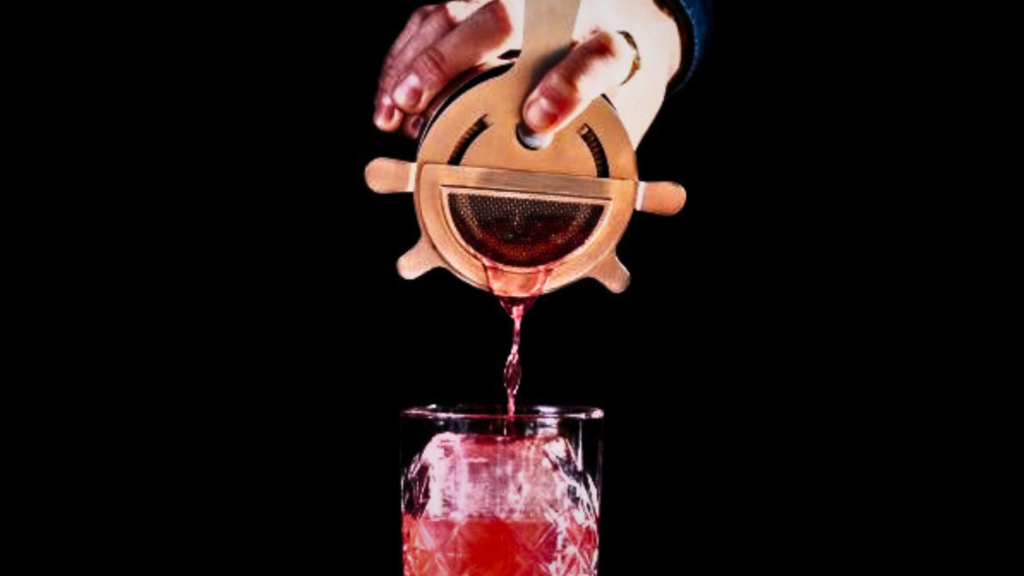
Straining cocktails is an art in itself, and it requires the right tools and methods to achieve the best results. Here’s what you need to know.
Cocktail Strainers
Arguably the most important tool for straining cocktails is, of course, the cocktail strainer. It is specifically designed to keep ice and other solid ingredients, like fruit and herbs, out of the drink as it’s poured into a glass. There are three popular types of cocktail strainers you should be familiar with:
- Hawthorne Strainer: Named after its inventress, Hawthorne, this strainer is the most common. With its coiled edge, it’s perfect for shaker tins and mixing glasses.
- Julep Strainer: This strainer borrows its name from the popular Mint Julep cocktail. It’s a perforated, spoon-like tool that fits snugly into mixing glasses.
- Conical Strainer: This strainer has small, tightly woven holes and a conical shape, making it suitable for finer straining tasks, such as removing pulp and small ice chips.
Methods of Straining
While having the right tools is essential, knowing how to use them effectively also matters. Here are two primary methods of straining:
- Single Straining: This method uses just one strainer, with the goal of removing larger pieces like ice or large fruit chunks from the cocktail mix.
- Double Straining: If your cocktail includes fine herbs, fruit pulp, or crushed ice, a second straining method is often used to guarantee a smooth, clean finished product. This is known as double straining, and it typically involves both a Hawthorne or Julep strainer and a conical strainer.
Remember that the key to good straining lies in understanding the texture and composition of your cocktail. Depending on the ingredients you use, you may need to use different strainers and methods to ensure a perfectly executed result.
Read also: How Much Are Cocktails On A Carnival Cruise?
How does straining influence the taste and presentation of a cocktail?
Straining can transform your cocktail from good to great by achieving two primary things: refinement of taste and enhancement of presentation. Let’s take a closer look at how this happens.
Taste: The act of straining a cocktail may seem like a simple process, but it plays an incredibly significant role in the final taste of your drink. Firstly, straining eliminates the solid particles that generally get mixed in during the muddling and shaking processes. These pieces can include fruit pulp, herbs, ice shards, and even bits of coagulated products from mixers. While these particles aren’t harmful, they can add an unwanted texture and flavor when consumed.
- Leaving these fragments in will result in a cocktail that’s gritty or chunky, detracting from a smooth, enjoyable drinking experience.
- The flavor of the fragments can intensify over time, gradually overpowering other flavors and resulting in a drink that tastes overly sweet, bitter, or sour.
Therefore, by straining these elements out, you ensure the purest, smoothest flavor profile possible, offering a seamless drinking experience.
Presentation: Straining not only impacts the taste but also significantly elevates the visual appeal of a cocktail. A cocktail served with fine particles floating on top or settled at the bottom is not visually appealing to most. The look of your drink can impact the drinking experience before you’ve even had your first sip. So, straining is a tiny step that can make your cocktail appear more professional and appealing.
Remember, in a cocktail party setting, especially, you’re not just crafting a drink; you’re putting on a performance. A cleanly strained, crystal-clear cocktail has an elegance and sophistication to it, sending out the vibe that the bartender knows what they’re doing.
In conclusion, straining is the final, critical touch that ties the flavor and presentation of your cocktail together into an unforgettable package. So, give your drink the finishing touch it deserves and master the art of straining!
What are some expert tips and tricks to master the art of straining cocktails?

Concocting the perfect cocktail involves mastering the art of straining. This not only refines the cocktail’s presentation but also enhances its overall taste and texture. Let’s delve into some pro tips to perfect your straining craft.
- Choose the right strainer for the right drink. Not all strainers are created equal, and selecting the appropriate one can make a significant difference in your cocktail. A Hawthorne strainer works best for shaken drinks, while a Julep strainer’s broad surface is ideal for straining stirred cocktails.
- Double Straining: For cocktails with crushed ingredients like mint or fruit, double straining is recommended. To do this, strain your drink through a fine strainer in addition to the regular one. This technique will catch any little bits and improve the beverage’s smoothness.
- Angling your strainer: The way your strainer interacts with the glass rim affects the smoothness of the pour. Aim for a gentle stream by hitting the glass close to its vertical side, which reduces splashing and gives you more control.
- Be mindful of ice: Ice shards or chips in a cocktail can dilute the drink and alter its taste. Carefully straining out these pieces will ensure your cocktail remains flavorful and potent.
These are just some tips to guide you. Remember that the craft of cocktail straining is a balance of art and science. Taking the time to hone this skill will undoubtedly elevate your cocktail game.
Read also: How To Make Dry Ice Drinks & Cocktails?
Conclusion
In conclusion, straining cocktails is a ritual that is as much about the craft and presentation as it is about the final taste of the cocktail. It is a key step in cocktail making, honed over the years by proficient bartenders, that gives these drinks their distinctive clarity and smoothness.
Straining not only removes unwanted particles but also plays a pivotal role in determining the texture and appearance of a drink, contributing significantly to a cocktail’s overall visual appeal and taste.
While it may seem complex, straining cocktails is an art that can be mastered with practice, patience, and the right tools. From using traditional cocktail strainers to modern, advanced methods, straining cocktails has evolved over the years.
Today, different types of strainers are used for different purposes, each adding a unique way to the straining process. Above all, it’s the bartender’s touch that makes each strained cocktail a masterpiece, lending it a unique character and charm.
To wrap up, we’ve explored the history and significance of straining cocktails, understood its impact on the cocktail’s taste and presentation, and learned about various methods and tools used in this process.
We hope this information has offered a deeper insight into cocktail straining, shed light on its importance in cocktail crafting, and encouraged you to try your hand at this fine art, developing and perfecting your own signature cocktails.
FAQs
What is the purpose of straining in cocktail making?
The process of straining is used to separate the mixers and muddled elements from the pure liquid of the cocktail. It allows for smoother drinking and a more polished presentation.
Is it necessary to use a cocktail strainer while making drinks at home?
While it’s not absolutely necessary, using a cocktail strainer can vastly improve the taste and quality of your homemade cocktails. It helps in removing ice, fruit peels, pulp, and seeds from the drink, providing a smoother and more enjoyable experience.
What can I use if I don’t have a cocktail strainer?
Many common kitchen tools can substitute for a cocktail strainer. A slotted spoon, sieve, cheesecloth, or even a clean t-shirt can work in a pinch.
How does straining affect the flavor of a cocktail?
Straining can impact the flavor of a cocktail by removing any solid ingredients. This allows the liquid elements of the drink to shine without any interruption from residual pulp or particles.
Why do some cocktails require double straining?
Double straining is often employed when a cocktail has been shaken with herbs or fruits. It ensures no small bits of these ingredients end up in the final product, providing a silky-smooth result.
How do I clean a cocktail strainer?
Clean your cocktail strainer by rinsing it with warm water soon after use. For a thorough cleaning, soak it in warm water with a small amount of dish soap, then scrub it gently with a soft cloth or sponge and rinse.
What does “fine strain” mean in cocktail recipes?
“Fine strain” means to pour the mixture through a fine mesh strainer, which can catch smaller particles and bits of herbs or fruit that a regular strainer might miss.
What are some of the most commonly used strainers in the bartending industry?
Commonly used strainers in bartending include the Hawthorne strainer, the Julep strainer, and the fine mesh strainer. Each has a specific usage and is best suited to different kinds of cocktails.
Can I strain a cocktail too much?
Overstraining is not typically a concern in cocktail making. Strain as much as necessary to ensure all unwanted solid ingredients are removed to achieve your desired texture and clarity.
Is straining a cocktail time-consuming?
Straining a cocktail does not typically add much time to the process. However, it does significantly improve the quality and presentation of your drink, making it a worthwhile step in most cocktail recipes.

Hello, friends! I’m Tom Elba, the driving force behind cocktailscape.com, your virtual hub for all things cocktails. If you have a passion for mixology or simply enjoy sipping on a well-crafted drink, then you’ve landed in the right place.
At Cocktailscape, I’m dedicated to sharing my love for the art of cocktail-making through tantalizing recipes, expert tips, and vibrant stories from the world of mixology. Whether you’re a seasoned bartender or an enthusiastic home cocktail enthusiast, there’s something here for everyone.
From classic concoctions like the Old Fashioned and the Martini to innovative twists and modern creations, I’m here to inspire you to shake, stir, and sip your way through a world of flavor.
But Cocktailscape is more than just recipes—it’s a celebration of culture, creativity, and community. I delve into the history behind iconic cocktails, explore emerging trends in the industry, and spotlight talented bartenders from around the globe.
So whether you’re looking to expand your cocktail repertoire, host the perfect soirée, or simply unwind with a refreshing drink after a long day, Cocktailscape has got you covered. Cheers to endless possibilities and unforgettable sips—let’s raise a glass together at cocktailscape.com!
